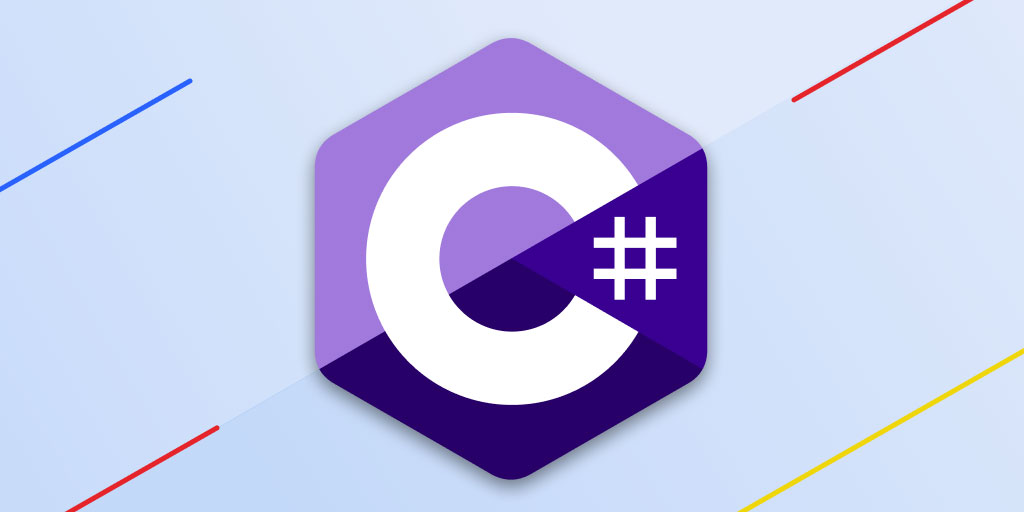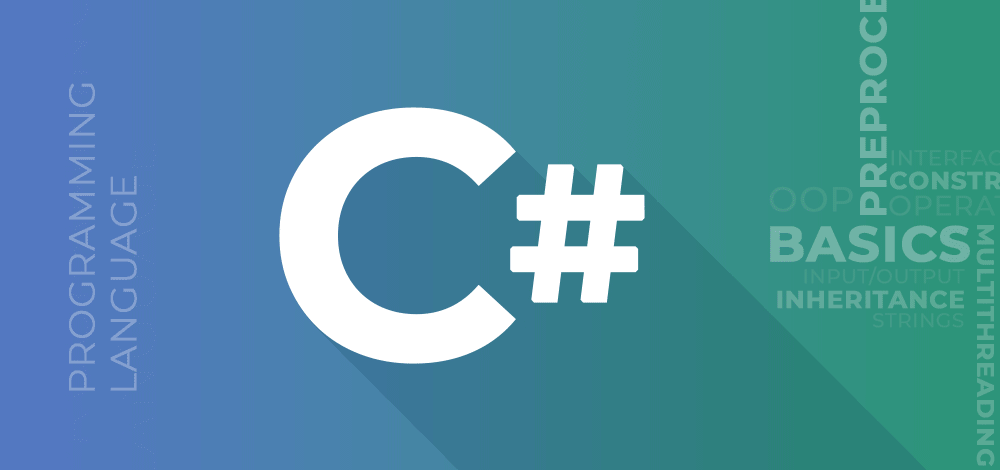Designing Immutable Objects and Data Structures in C#
Jul 15, 2025 am 12:34 AMThe core of designing immutable objects and data structures in C# is to ensure that the state of the object is not modified after creation, thereby improving thread safety and reducing bugs caused by state changes. 1. Use readonly fields and initialize them with constructors to ensure that the fields are only assigned values during construction, as shown in the Person class; 2. Encapsulate the collection type and use immutable collection interfaces such as ReadOnlyCollection or ImmutableList to prevent external modification of internal collections; 3. Use record to simplify the definition of immutable model, and generate read-only attributes and constructors by default, suitable for data modeling; 4. When creating immutable collection operations, it is recommended to use the types in System.Collections. Immutable, such as ImmutableList. Each modification returns a new instance to ensure that the original data remains unchanged and memory reuse is optimized. The above methods jointly ensure the immutability of the object throughout its life cycle.

In designing immutable objects and data structures in C#, the core is to ensure that once an object is created, its state cannot be modified. This not only helps to write thread-safe code, but also reduces potential bugs caused by state changes. The key to implementation is to use read-only fields, constructor initialization, and avoid exposing mutable states.

1. Initialize using readonly fields and constructors
The most basic immutable object in C# is implemented by initializing the readonly field and constructor. readonly ensures that fields can only be assigned once in the constructor and cannot be changed afterwards.

public class Person
{
public string FirstName { get; }
public string LastName { get; }
public Person(string firstName, string lastName)
{
FirstName = firstName;
LastName = lastName;
}
}- This approach is suitable for small objects or value objects (such as DTO).
- All properties are read-only and cannot be modified externally.
- The constructor is responsible for all initializations, clear and clear.
This method is simple and effective, but when the object structure is complex, you may encounter some limitations, such as whether nested objects also remain immutable.
2. Encapsulate collection types to maintain immutability
If your object contains collection class members, returning List<T> or Dictionary<TKey, TValue> directly may break the immutability because the caller can modify the collection content.

The correct way to do this is to use ReadOnlyCollection<T> or ImmutableList<T> :
public class Order
{
private readonly List<string> _items;
public IReadOnlyCollection<string> Items => _items.AsReadOnly();
public Order(IEnumerable<string> items)
{
_items = new List<string>(items);
}
} Or use the type provided by System.Collections.Immutable :
using System.Collections.Immutable;
public class Order
{
public IImutableList<string> Items { get; }
public Order(IImmutableList<string> items)
{
Items = items ?? ImmutableList<string>.Empty;
}
}- It is recommended to use interfaces such as
IImmutableList<T>to pass invariant collections. - Avoid exposing internal collections directly to external modifications.
- Deeply copy the original data during initialization to prevent subsequent changes in external references from affecting the internal state.
3. Simplify immutable models with records
Starting with C# 9, record is ideal for defining immutable types. It generates read-only properties by default and automatically implements equal logic and immutable semantics.
public record Person(string FirstName, string LastName);
- The compiler automatically generates constructors, read-only properties, and
Withexpressions. - Supports pattern matching and value semantics, which are ideal for data modeling.
- If you need extension methods or extra logic, you can add them in record.
It should be noted that although the instance of record is immutable by default, if the field itself is a mutable object (such as a normal class), the entire structure may still be "shallow immutable". Therefore, it is necessary to ensure that nested objects are also immutable.
4. Operation suggestions for creating immutable collections
When you need to frequently operate collections (such as adding and deleting elements) and want to maintain immutability, it is recommended to use the types provided by System.Collections.Immutable , for example:
using System.Collections.Immutable; var list = ImmutableList<int>.Empty; list = list.Add(1).Add(2); // Return new instance
- Each operation returns a new immutable instance instead of modifying the original object.
- Memory reuse is optimized internally, with better performance than creating new lists every time.
- Common types include
ImmutableList<t></t>,ImmutableDictionary<tkey tvalue></tkey>andImmutableHashSet<t></t>.
Be careful when using these types:
- Do not mix mutable and immutable sets, as they can easily lead to misoperation.
- Try to use
IImmutableList<t></t>instead of concrete implementation classes in the API interface, for easy replacement and testing. - During initialization, existing collections can be quickly converted through
.ToImmutableList().
Basically that's it. The design focus of immutable objects is to control state changes and to use language features and library support rationally. Although it is slightly more steps to write than the normal class, the benefits in terms of concurrency and data consistency are well worth it.
The above is the detailed content of Designing Immutable Objects and Data Structures in C#. For more information, please follow other related articles on the PHP Chinese website!

Hot AI Tools

Undress AI Tool
Undress images for free

Undresser.AI Undress
AI-powered app for creating realistic nude photos

AI Clothes Remover
Online AI tool for removing clothes from photos.

Clothoff.io
AI clothes remover

Video Face Swap
Swap faces in any video effortlessly with our completely free AI face swap tool!

Hot Article

Hot Tools

Notepad++7.3.1
Easy-to-use and free code editor

SublimeText3 Chinese version
Chinese version, very easy to use

Zend Studio 13.0.1
Powerful PHP integrated development environment

Dreamweaver CS6
Visual web development tools

SublimeText3 Mac version
God-level code editing software (SublimeText3)

Hot Topics
 The difference between multithreading and asynchronous c#
Apr 03, 2025 pm 02:57 PM
The difference between multithreading and asynchronous c#
Apr 03, 2025 pm 02:57 PM
The difference between multithreading and asynchronous is that multithreading executes multiple threads at the same time, while asynchronously performs operations without blocking the current thread. Multithreading is used for compute-intensive tasks, while asynchronously is used for user interaction. The advantage of multi-threading is to improve computing performance, while the advantage of asynchronous is to not block UI threads. Choosing multithreading or asynchronous depends on the nature of the task: Computation-intensive tasks use multithreading, tasks that interact with external resources and need to keep UI responsiveness use asynchronous.
 C# vs. C : History, Evolution, and Future Prospects
Apr 19, 2025 am 12:07 AM
C# vs. C : History, Evolution, and Future Prospects
Apr 19, 2025 am 12:07 AM
The history and evolution of C# and C are unique, and the future prospects are also different. 1.C was invented by BjarneStroustrup in 1983 to introduce object-oriented programming into the C language. Its evolution process includes multiple standardizations, such as C 11 introducing auto keywords and lambda expressions, C 20 introducing concepts and coroutines, and will focus on performance and system-level programming in the future. 2.C# was released by Microsoft in 2000. Combining the advantages of C and Java, its evolution focuses on simplicity and productivity. For example, C#2.0 introduced generics and C#5.0 introduced asynchronous programming, which will focus on developers' productivity and cloud computing in the future.
 How to change the format of xml
Apr 03, 2025 am 08:42 AM
How to change the format of xml
Apr 03, 2025 am 08:42 AM
There are several ways to modify XML formats: manually editing with a text editor such as Notepad; automatically formatting with online or desktop XML formatting tools such as XMLbeautifier; define conversion rules using XML conversion tools such as XSLT; or parse and operate using programming languages ??such as Python. Be careful when modifying and back up the original files.
 How to convert xml to json
Apr 03, 2025 am 09:09 AM
How to convert xml to json
Apr 03, 2025 am 09:09 AM
Methods to convert XML to JSON include: writing scripts or programs in programming languages ??(such as Python, Java, C#) to convert; pasting or uploading XML data using online tools (such as XML to JSON, Gojko's XML converter, XML online tools) and selecting JSON format output; performing conversion tasks using XML to JSON converters (such as Oxygen XML Editor, Stylus Studio, Altova XMLSpy); converting XML to JSON using XSLT stylesheets; using data integration tools (such as Informatic
 What is c# multithreading programming? C# multithreading programming uses c# multithreading programming
Apr 03, 2025 pm 02:45 PM
What is c# multithreading programming? C# multithreading programming uses c# multithreading programming
Apr 03, 2025 pm 02:45 PM
C# multi-threaded programming is a technology that allows programs to perform multiple tasks simultaneously. It can improve program efficiency by improving performance, improving responsiveness and implementing parallel processing. While the Thread class provides a way to create threads directly, advanced tools such as Task and async/await can provide safer asynchronous operations and a cleaner code structure. Common challenges in multithreaded programming include deadlocks, race conditions, and resource leakage, which require careful design of threading models and the use of appropriate synchronization mechanisms to avoid these problems.
 How to convert xml into word
Apr 03, 2025 am 08:15 AM
How to convert xml into word
Apr 03, 2025 am 08:15 AM
There are three ways to convert XML to Word: use Microsoft Word, use an XML converter, or use a programming language.
 How to open xml format
Apr 02, 2025 pm 09:00 PM
How to open xml format
Apr 02, 2025 pm 09:00 PM
Use most text editors to open XML files; if you need a more intuitive tree display, you can use an XML editor, such as Oxygen XML Editor or XMLSpy; if you process XML data in a program, you need to use a programming language (such as Python) and XML libraries (such as xml.etree.ElementTree) to parse.
 C# .NET: Building Applications with the .NET Ecosystem
Apr 27, 2025 am 12:12 AM
C# .NET: Building Applications with the .NET Ecosystem
Apr 27, 2025 am 12:12 AM
How to build applications using .NET? Building applications using .NET can be achieved through the following steps: 1) Understand the basics of .NET, including C# language and cross-platform development support; 2) Learn core concepts such as components and working principles of the .NET ecosystem; 3) Master basic and advanced usage, from simple console applications to complex WebAPIs and database operations; 4) Be familiar with common errors and debugging techniques, such as configuration and database connection issues; 5) Application performance optimization and best practices, such as asynchronous programming and caching.






